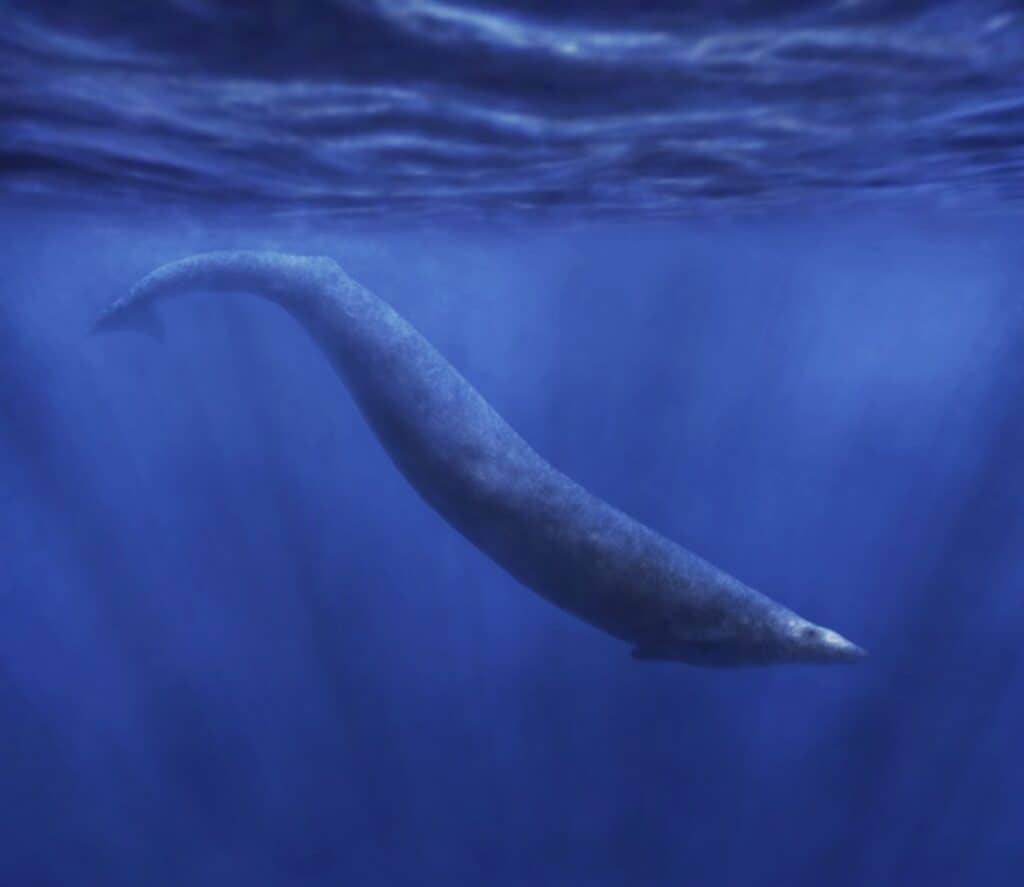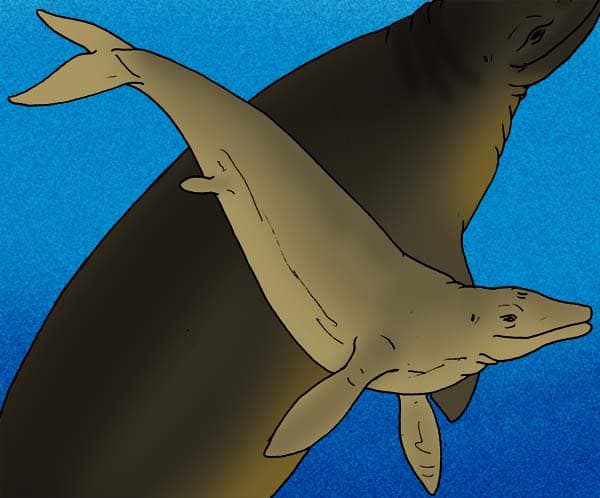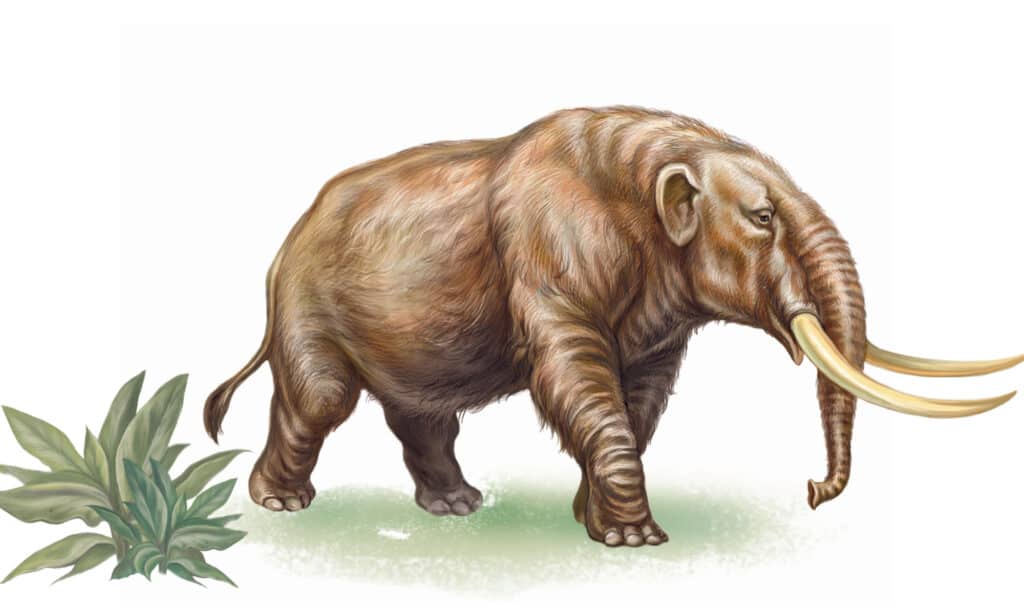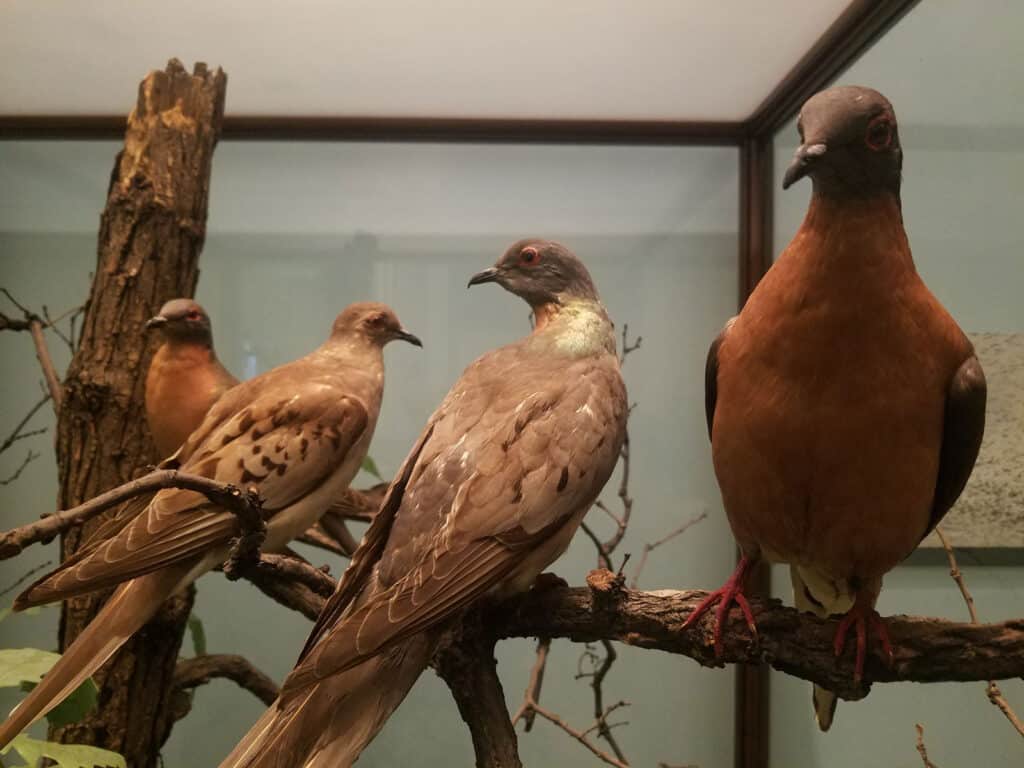Mississippi is a state located in the Southeast of the United States. Wildlife in Mississippi includes many marine animals, and this was the case even during prehistoric times.
According to studies, Mississippi became an ocean during the late Mesozoic and early Cenozoic eras. Warm, tropical seas used to exist on the southern lands of Mississippi. Until now, no dinosaur fossils have been discovered in Mississippi, but many fossils of mollusks, invertebrates, bony fishes, and prehistoric sharks were discovered. During this period, prehistoric whales were considered the largest animals.
Here are six extinct animals in Mississippi:
1. Basilosaurus

The Basilosaurus, which means “king lizard,” is a genus of large prehistoric predatory whales.
©Dominik Hammelsbruch / CC BY-SA 4.0 – License
| Basilosaurus cetoides | |
|---|---|
| Kingdom | Animalia |
| Phylum | Chordata |
| Class | Mammalia |
| Order | Artiodactyla |
| Infraorder | Cetacea |
| Family | Basilosauridae |
| Subfamily | Basilosaurinae |
| Genus | Basilosaurus |
| Species | Basilosaurus cetoides Basilosaurus isis |
| Extinct since | Late Eocene: 38 million to 34 million years ago |
The Basilosaurus cetoides, which means “king lizard,” is a genus of large prehistoric predatory whales. They were named with the suffix –saurus, a Greek word that means “reptile,” because they were initially thought of as one. In a brief report, Richard Harlan described the first Basilosaurus fossil found in Alabama and named it in 1935. However, Richard Owen published his observation of the teeth and jaw structure of the Basilosaurus and concluded that it belongs to the Mammalia class.
According to more studies, Basilosauruses were carnivores and were the apex predators in the oceans of the late Eocene. Apex predators are often the largest animals of their kind. Basilosaurus cetoides’ diet was mainly fish and sharks ranging up to approximately 19.7 inches (50 cm) in length. They were active predators that caught, bit, and swallowed fishes like the modern killer whales, scientifically named Orcinus orca.
Several fossils of Basilosaurus cetoides were recovered from an indurated block of the Pachuta Marl Member, Yazoo Formation in Mississippi. These fossils were excavated mostly in Wayne County, Mississippi. But some were also found in Egypt and other parts of the U.S.: Louisiana, Tennessee, Arkansas, Florida, Georgia, and Alabama. Although they were not excellently preserved, they recovered a thoracic and cervical vertebra, with a few rib fragments, and a pre-molar tooth with intact enamel.
Basilosaurus cetoides and Zygorhiza kochii became the state fossils on March 26, 1981, with Senate Concurrent Resolution No. 557.
2. Zygorhiza kochii

Zygorhiza kochii is believed to be the descendant of modern cetaceans like dolphins, whales, and porpoises.
©Apokryltaros / CC BY-SA 3.0 – License
| Zygorhiza kochii | |
|---|---|
| Kingdom | Animalia |
| Phylum | Chordata |
| Class | Mammalia |
| Order | Artiodactyla |
| Infraorder | Cetacea |
| Family | Basilosauridae |
| Subfamily | Dorudontinae |
| Genus | Zygorhiza |
| Species | Zygorhiza Kochi |
| Extinct since | Late Eocene: 38 million to 34 million years ago |
Zygorhiza kochii is a prehistoric whale that is related to Basilosaurus since both species are from the Basilosauridae family. This species is believed to be the descendants of modern cetaceans like dolphins, whales, and porpoises. The intelligence of these modern animals is attributed to their large brains. Some studies suggest their significant brain evolution was related to Zygorhiza kochii. The same research indicates that the body mass of Zygorhiza kochii was approximately 7,388 pounds (3,351 kg).
3. Mastodon

Mastodons were herbivore mammals with tusks relatively smaller than the extinct mammoths.
©Liliya Butenko/Shutterstock.com
| Mastodon | |
|---|---|
| Kingdom | Animalia |
| Phylum | Chordata |
| Class | Mammalia |
| Order | Proboscidea |
| Family | Mammutidae |
| Genus | Mammut |
| Species | Mastodon americanum Mastodon cosoensis Mastodon matthewi Mastodon Pacificus Mastodon raki |
| Living Period | Pleistocene Epoch: 2,580,000 to 11,700 years ago |
Mastodons may look like giant elephants or mammoths but are not the same species. However, mastodons, mammoths, and modern elephants are related because they belong to the Mammutidae family. Mastodons are older than mammoths; their oldest fossils are dated 25 million to 27 million years old. Meanwhile, the oldest fossils of mammoths are only dated 5 million years old. Both species are more prominent in North America than in South America, but the discovery of mastodon remains in Mississippi has piqued the interest of many paleontologists. In 2018, national news reported some boys who dug up a fossil of a Mastodon in Bovina, Mississippi.
Mastodons were herbivore mammals with tusks relatively smaller than the extinct mammoths. A mastodon’s tusk could grow up to 8 feet (96 inches), while a mammoth’s tusk could grow up to 16 feet (192 inches). The latter also had a curvier tusk compared to the former, which had straighter tusks. However, some mastodon specimens show they could also have an extra chin tusk. With shorter legs, longer bodies, and flatter heads, mastodons looked shorter and thicker than mammoths. They had hairy tails that grew as long as 35 inches (89 cm).
4. Carolina Parakeet

The typical diet of the Carolina parakeet consists of fruits, seeds, flowers, and insects.
©Wirestock Creators/Shutterstock.com
| Carolina parakeet | |
|---|---|
| Kingdom | Animalia |
| Phylum | Chordata |
| Class | Aves |
| Order | Psittaciformes |
| Family | Psittacidae |
| Tribe | Arini |
| Genus | Conuropsis |
| Species | Conuropsis carolinensis |
| Subspecies | Conuropsis carolinensis carolinensis Conuropsis carolinensis ludovicianus |
| Extinct since | Either in the late 1930s or mid-1940s |
The Carolina parakeet is an extinct species of bird that used to live in North America. The two subspecies of Conuropsis carolinensis went extinct 30 years apart. According to studies, C. c. ludovicianus went extinct around 1914, and the eastern subspecies, C. c. carolinensis, either in the late 1930s or mid-1940s.
The typical diet of the Carolina parakeet consisted of fruits, seeds, flowers, and insects. If humans did not hunt them, they could live up to 30 years, grow up to 12-13 inches (30-33 cm) long and weigh up to 0.6 pounds (280 grams).
5. Passenger Pigeon

Passenger pigeons fed on beechnuts, acorns, and chestnuts.
©ChicagoPhotographer/Shutterstock.com
| Passenger Pigeon | |
|---|---|
| Kingdom | Animalia |
| Phylum | Chordata |
| Class | Aves |
| Order | Columbiformes |
| Family | Columbidae |
| Genus | Ectopistes |
| Species | Ectopistes migratorius |
| Extinct since | 1914 |
Passenger pigeons were birds that lived in hardwood forests. They fed on beechnuts, acorns, and chestnuts but were hunted for food by humans. Although passenger pigeons are extinct migratory birds, early records of the species show that they used to live in Mississippi. The last record of a great flock of passenger pigeons was in the Mississippi Valley in 1844. However, the last passenger pigeon was Martha, who died in a cage at the Cincinnati Zoo in 1914.
6. Ivory-Billed Woodpecker

The leading causes of
ivory-billed woodpecker
extinction were habitat loss and hunting.
©iStock.com/Nathan McDaniel
| Ivory-billed woodpecker | |
|---|---|
| Kingdom | Animalia |
| Phylum | Chordata |
| Class | Aves |
| Order | Piciformes |
| Family | Picidae |
| Genus | Campephilus |
| Species | Campephilus principalis |
| Extinct since | 1944 |
Ivory-billed woodpeckers, scientifically named Campephilus principalis, are extinct birds that used to occur in Mississippi and regions of North America. The U.S. Fish and Wildlife Service declared the delisting of the ivory-billed woodpecker and 22 other species of animals in 2021. The leading causes of their extinction were habitat loss and hunting. The last reported sighting of the ivory-billed woodpecker in the U.S. was in Louisiana in 1944 and Cuba in 1986.
Summary of 6 Extinct Animals That Lived in Mississippi
Here’s a recap of 6 extinct animals that once inhabited Mississippi:
| Number | Animal | Date of Extinction |
|---|---|---|
| 1 | Basilosaurus | Late Eocene: 38 million to 34 million years ago |
| 2 | Zygorhiza kochii | Late Eocene: 38 million to 34 million years ago |
| 3 | Mastodon | Lived during Pleistocene Epoch: 2,580,000 to 11,700 years ago |
| 4 | Carolina Parakeet | Either in the late 1930s or mid-1940s |
| 5 | Passenger Pigeon | 1914 |
| 6 | Ivory-Billed Woodpecker | 1944 |
The photo featured at the top of this post is © Wirestock Creators/Shutterstock.com
Thank you for reading! Have some feedback for us? Contact the AZ Animals editorial team.






